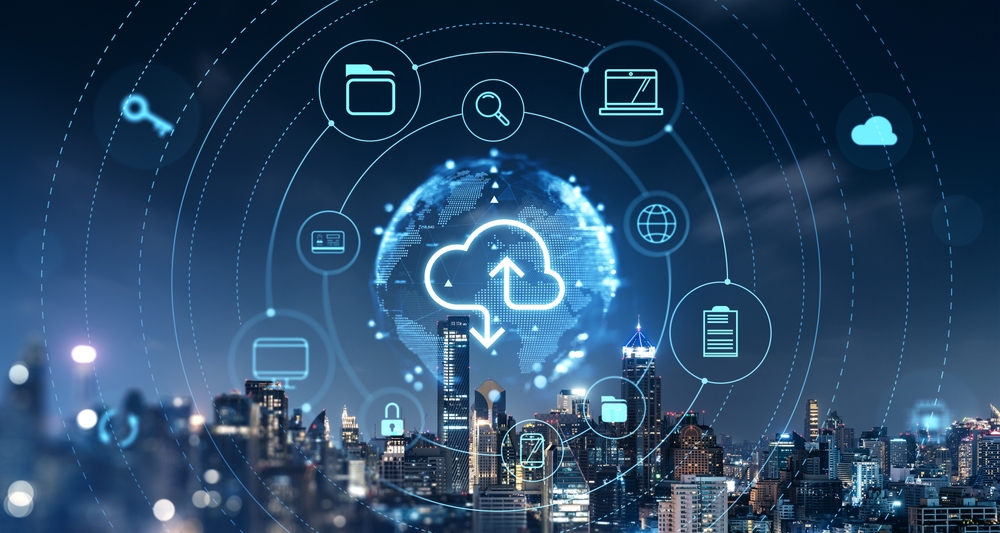In the shadowy corners of the digital world, small and medium-sized enterprises (SMEs) are increasingly finding themselves in the crosshairs of cybercriminals. In 2022, cyberattacks have skyrocketed, with a staggering 1 out of 2 of SMEs experiencing a breach.
The threats are real and relentless. For SMEs, this isn’t just a battle against faceless hackers; it’s a fight for survival. While larger corporations may have the luxury of extensive resources and dedicated teams, SMEs are often left navigating this treacherous landscape with limited budgets and expertise.
In response to this dire situation, a new vanguard of global cybersecurity agencies has emerged, offering a lifeline to these vulnerable businesses. This article delves into the efforts of four such key agencies. Each one brings unique insights and tools designed specifically to shield SMEs from the digital onslaught.
Why Following These Cybersecurity Guidelines is Key
Implementing these standards not only strengthens an organization’s defense against cyber threats but also provides tangible advantages such as reduced cyber insurance premiums. Insurance companies often consider adherence to these recognized frameworks as an indication of lower risk, leading to more favorable premium rates. This practical financial incentive encourages organizations to actively engage with these cybersecurity guidelines.
Moreover, the application of these cybersecurity measures enhances the overall trust and reputation of a business. For MSPs, this is particularly crucial, as their services are deeply rooted in maintaining robust security practices. Compliance with these well-established standards not only helps in meeting regulatory requirements but also offers a competitive edge in the market. Customers and partners are increasingly looking for organizations that demonstrate a proactive approach to cyber risk management, making the adoption of these frameworks a strategic move in building confidence and securing business relationships.
National Institute of Standards and Technology (NIST) – USA
Building on the urgent need for SMEs to fortify their cyber defenses, as highlighted in our introduction, the National Institute of Standards and Technology (NIST), part of the U.S. Department of Commerce, plays a crucial role. NIST is instrumental in developing standards that bolster innovation and economic competitiveness, including in cybersecurity. Its objective is to advance measurement science, standards, and technology in ways that enhance economic security and quality of life.
Central to NIST’s role in cybersecurity is its Cybersecurity Framework. This framework, created with input from both government and industry, offers a comprehensive set of guidelines for managing and reducing cybersecurity risks. It consists of three primary components:
- The Framework Core – which outlines a set of activities and outcomes in common language,
- Implementation Tiers – which help categorize an organization’s approach to cyber risk, and
- Framework Profiles – which tailor the standards and practices to specific organizational needs.
Key advantages for SMEs:
- Flexible and Cost-Effective: Adaptable to varying sizes and complexities of businesses.
- Common Language: Facilitates clear communication of cybersecurity policies with stakeholders.
- Scalable: Suitable for organizations at different levels of cybersecurity maturity.
- Resource Allocation: Helps prioritize cybersecurity efforts for efficient resource use.
- Reputation Enhancement: Aligning with a recognized framework can bolster an SME’s cybersecurity image.
Cybersecurity and Infrastructure Security Agency (CISA) – USA
Following our exploration of NIST’s contributions to cybersecurity, we turn our attention to another key player: the Cybersecurity and Infrastructure Security Agency (CISA). Operating within the United States government, CISA focuses on protecting the nation’s critical infrastructure from digital threats. As part of the Department of Homeland Security, its mission extends to ensuring the security, resilience, and reliability of the nation’s cyber and physical infrastructure.
A notable resource from CISA for SMEs is the Cyber Essentials Starter Kit. This kit is a guide specifically designed to provide a foundational approach to cybersecurity. It’s structured to help SMEs understand and navigate the realm of cyber threats and implement practical cybersecurity measures. The kit is organized into several essential areas, breaking down cybersecurity into manageable, understandable components.
Benefits of the Cyber Essentials Starter Kit for SMEs
- Simplicity: The kit provides clear and concise guidance, making it approachable for businesses with limited cybersecurity expertise.
- Actionable Steps: Offers practical, step-by-step advice to implement cybersecurity practices effectively.
- Risk Management: Helps in identifying and managing cyber risks pertinent to the business.
- Resource Allocation: Assists in prioritizing cybersecurity initiatives, ensuring efficient use of resources.
- Foundation for Growth: Establishes a baseline for cybersecurity, which is crucial for businesses looking to expand securely in the digital space.
National Cyber Security Centre (NCSC) – UK
Let’s now turn to the National Cyber Security Centre (NCSC) of the United Kingdom, another vital player in this field. Operating under the Government Communications Headquarters (GCHQ), the NCSC’s primary goal is to protect the UK from cyber threats, thereby making the digital world a safer place for both individuals and businesses. It extends its leadership and expertise in cybersecurity to organizations of all sizes, including SMEs.
One of the NCSC’s key initiatives is the Cyber Essentials scheme. This program is designed to offer a clear and accessible path to better cybersecurity practices, focusing on fundamental elements that can prevent the most common cyber-attacks. The scheme outlines five technical controls: secure internet connection, secure devices and software, controlled access to data and services, protection from viruses and other malware, and keeping devices and software up to date.
The role of the Cyber Essentials scheme for SMEs:
- Establishes Cyber Hygiene: Provides a foundation for businesses to build upon, ensuring basic cyber defenses are in place.
- Mitigates Common Threats: Helps protect against a wide range of the most common cyber-attacks.
- Boosts Confidence: Having the Cyber Essentials certification can give customers and partners confidence in a business’s cybersecurity measures.
- Encourages Best Practices: Promotes ongoing awareness and implementation of effective cybersecurity practices within the organization.
- Qualifies for Government Contracts: In some cases, having Cyber Essentials certification is a prerequisite for working with the UK government.
Australian Cyber Security Centre (ACSC) – Australia
Concluding our global overview of cybersecurity resources for SMEs, we now focus on the contributions of the Australian Cyber Security Centre (ACSC). The ACSC provides advice and information to help protect against cyber threats and responds to major cyber incidents in Australia.
A crucial initiative from the ACSC for SMEs is the ‘Essential Eight’ mitigation strategies. This framework is a suite of strategies designed to provide businesses with practical guidelines to protect their systems against a range of cyber threats. The Essential Eight includes strategies such as application control, patching applications, configuring Microsoft Office macro settings, user application hardening, restricting administrative privileges, patching operating systems, multi-factor authentication, and daily backup of important data.
The importance of these strategies for SMEs includes:
- Comprehensive Protection: Addresses a wide range of common cyber threats.
- Layered Defense: Each strategy adds a layer of protection, creating a more robust defense system.
- Flexibility: Can be tailored to the specific needs and risk profile of each SME.
- Cost-Effective: Many of the strategies are low cost yet highly effective in preventing cyber incidents.
- Improved Resilience: Enhances the ability of SMEs to withstand and recover from cyberattacks.
Conclusion
Cybersecurity is a critical business imperative for small and medium enterprises (SMEs), pivotal in navigating today’s landscape of ever-present digital threats. Agencies like NIST, CISA, NCSC, and ACSC offer invaluable frameworks that outline clear, actionable paths to enhance cyber resilience. Embracing these strategies not only fortifies your business but also builds essential trust with customers and partners.
Seeking an end-to-end solution for cybersecurity? BackupAssist Classic directly supports the cybersecurity strategies recommended by NIST, CISA, NCSC, and ACSC, with features like CryptoSafeGuard and versatile data control, enhancing your business’s cyber resilience. Its capability to adapt to varied SME needs ensures a robust, compliant, and cost-effective cyber defense. Try out BackupAssist Classic for free for the next 30 days and enjoy advanced, tailored defenses against cyber threats.





